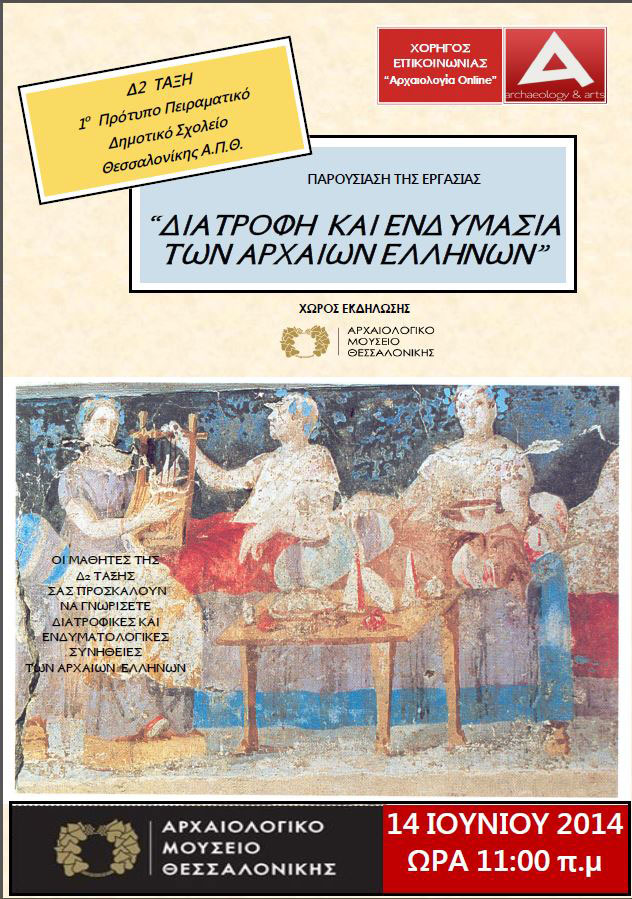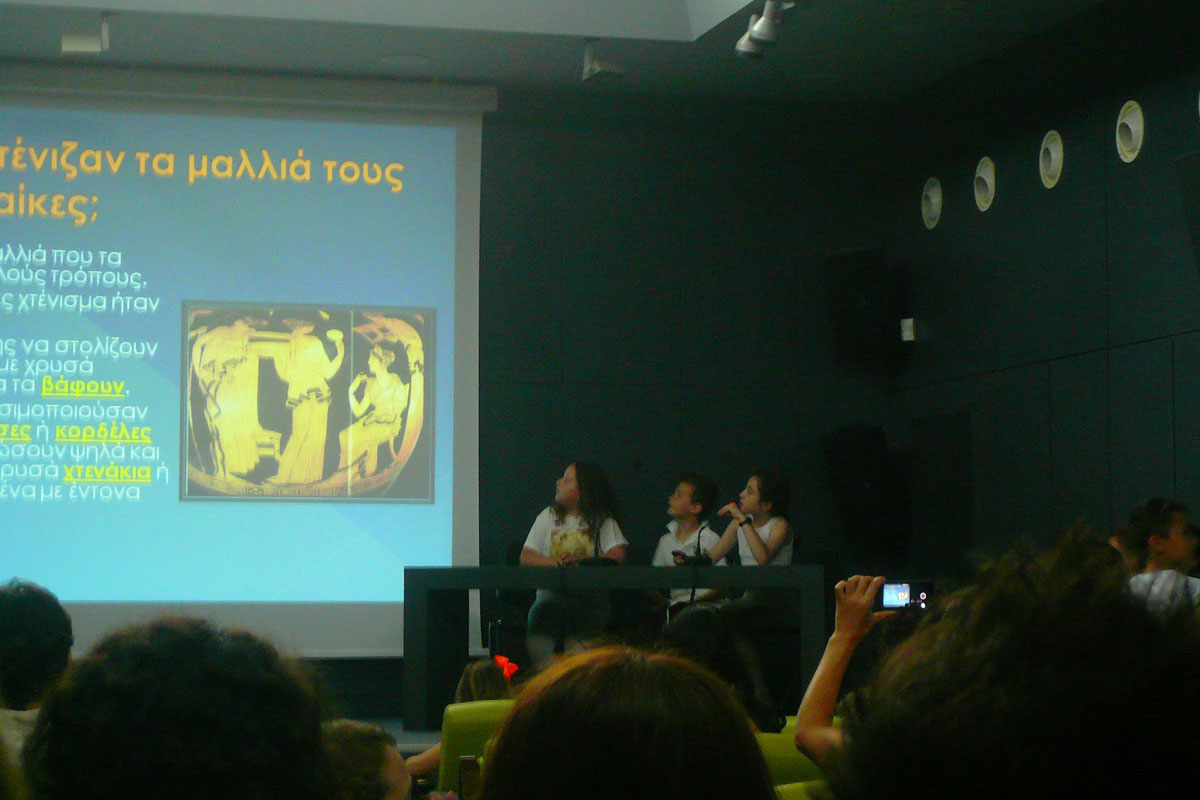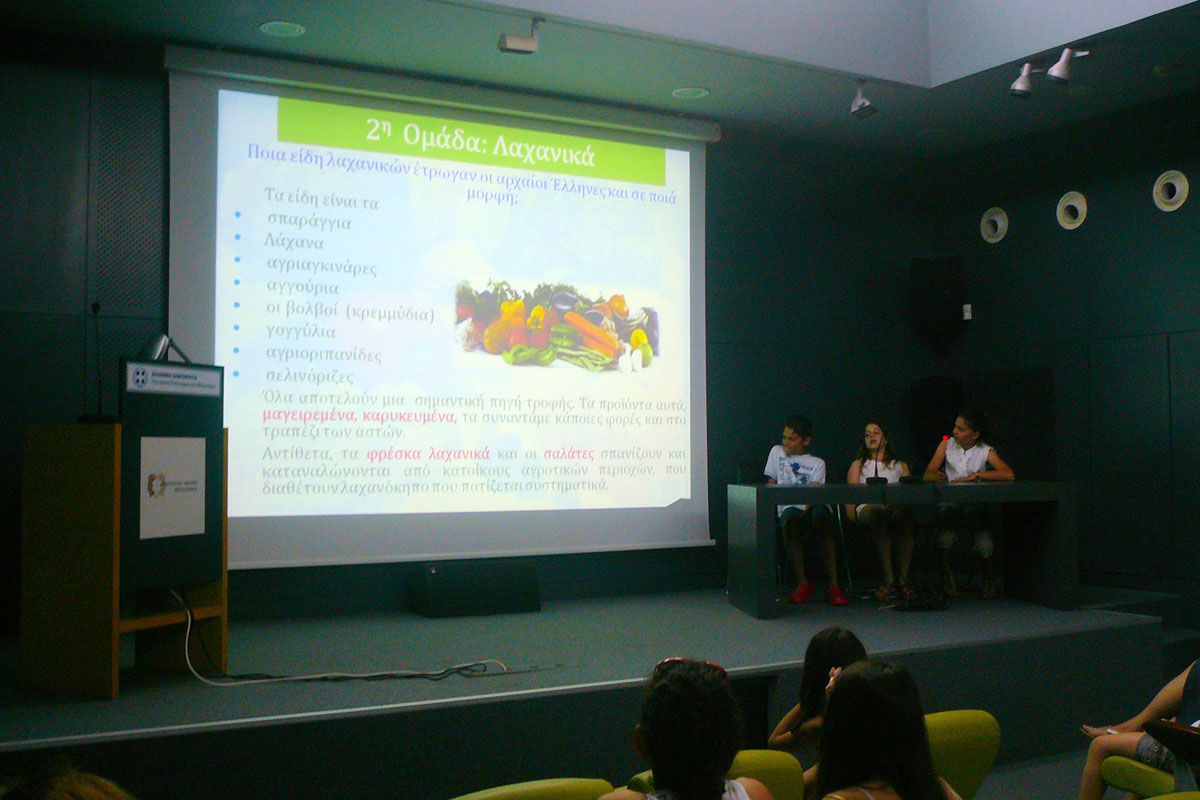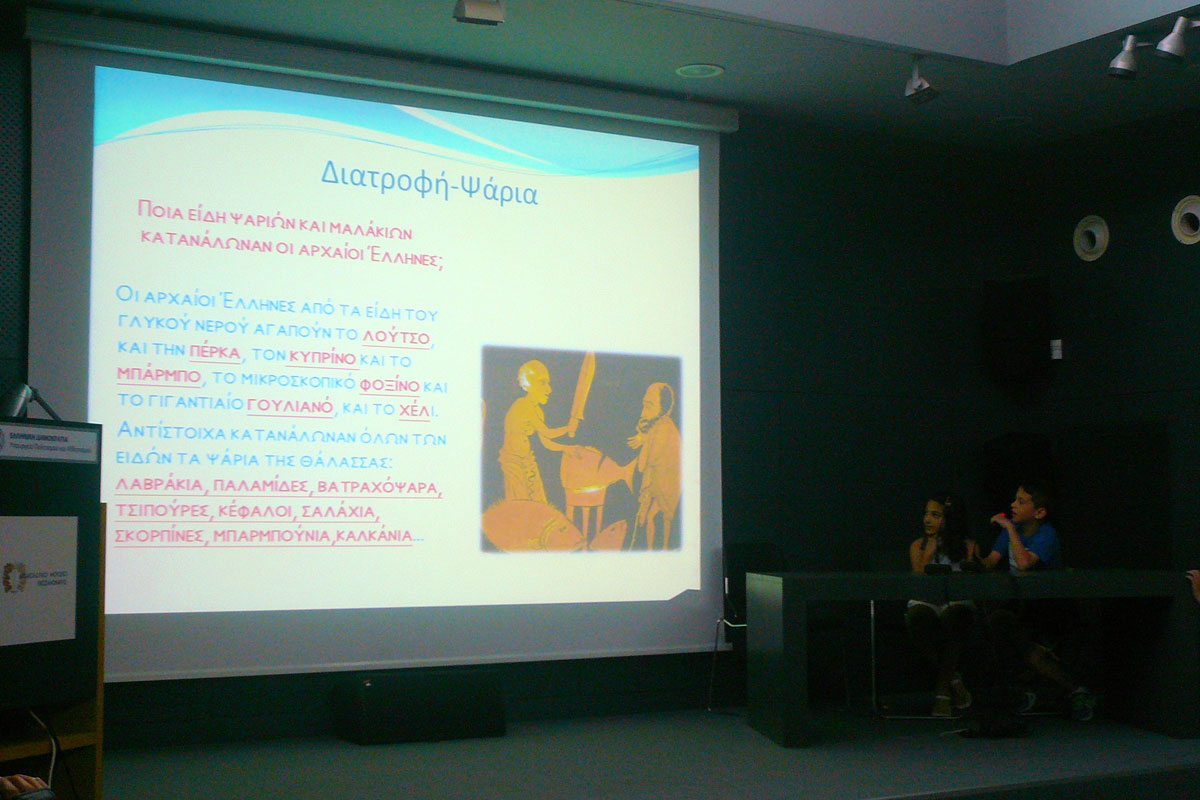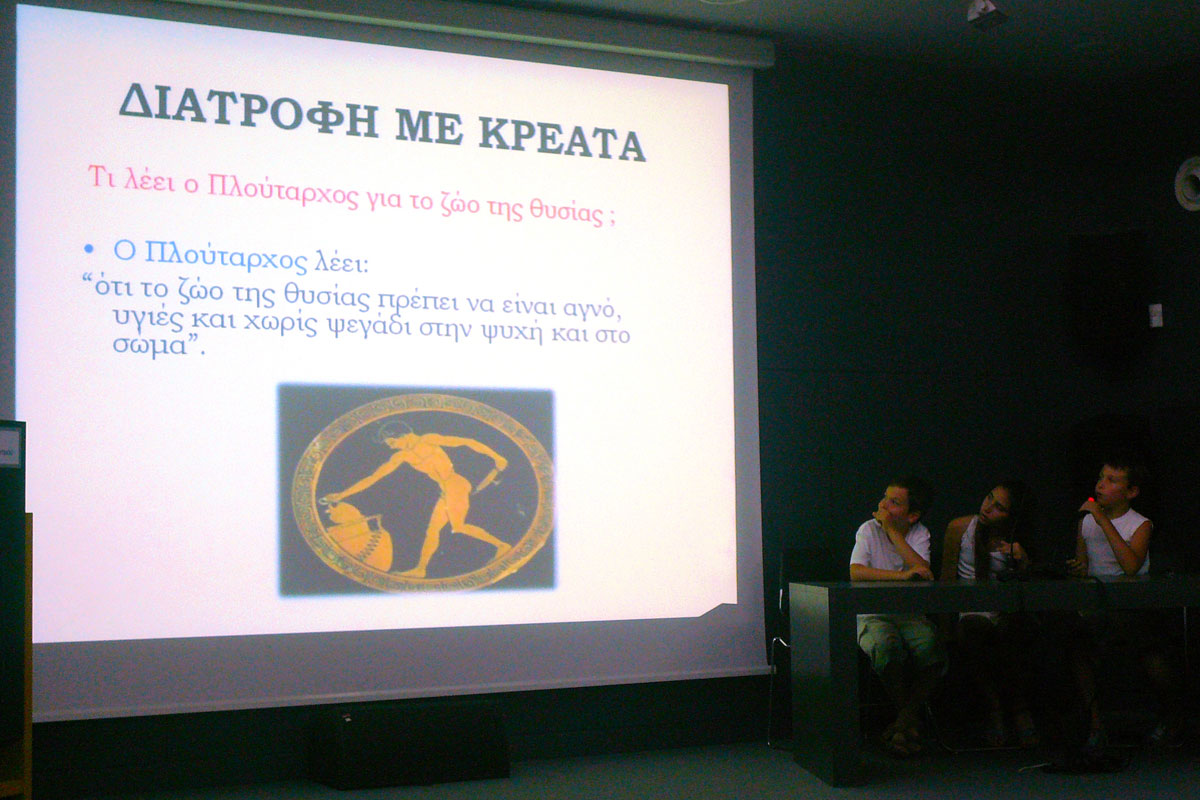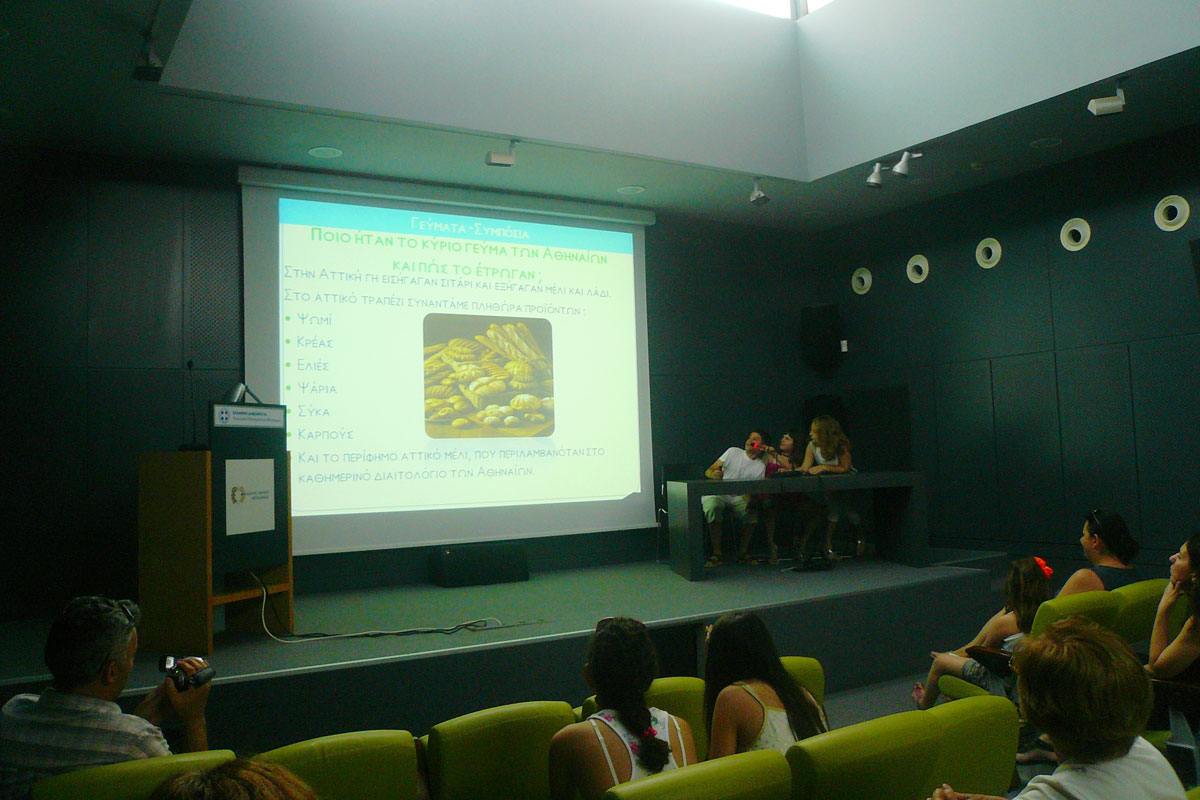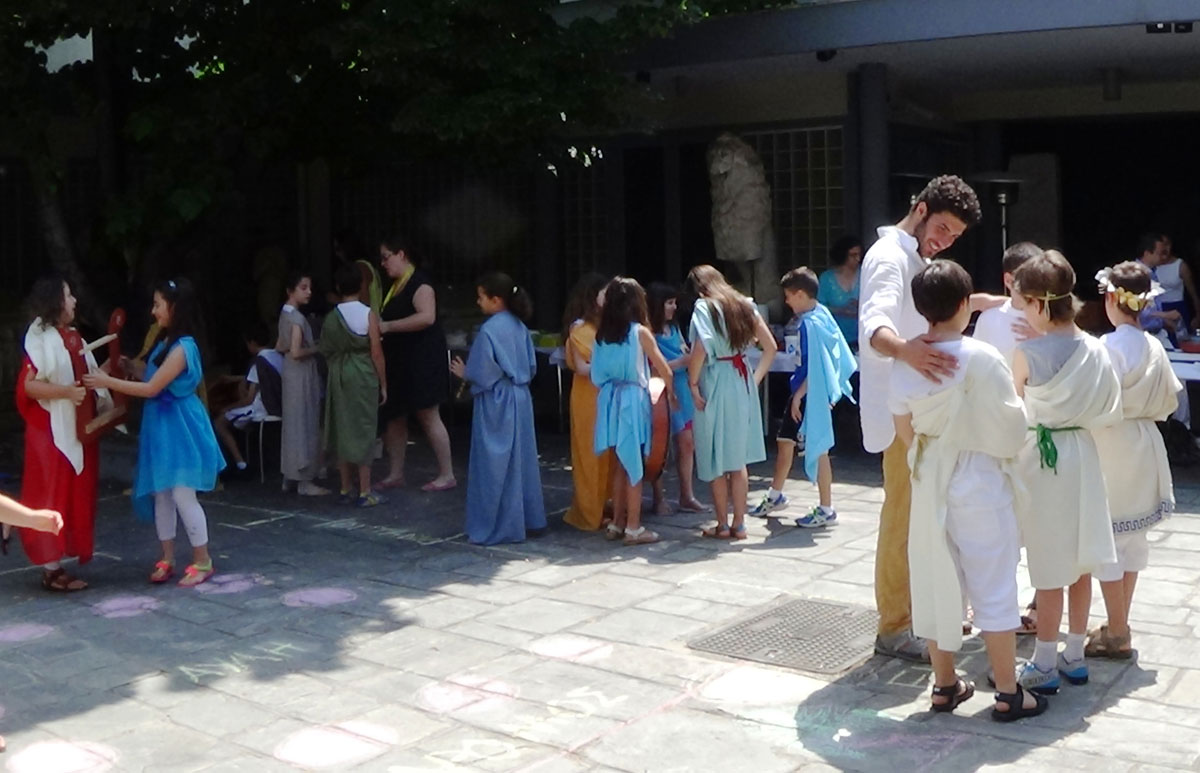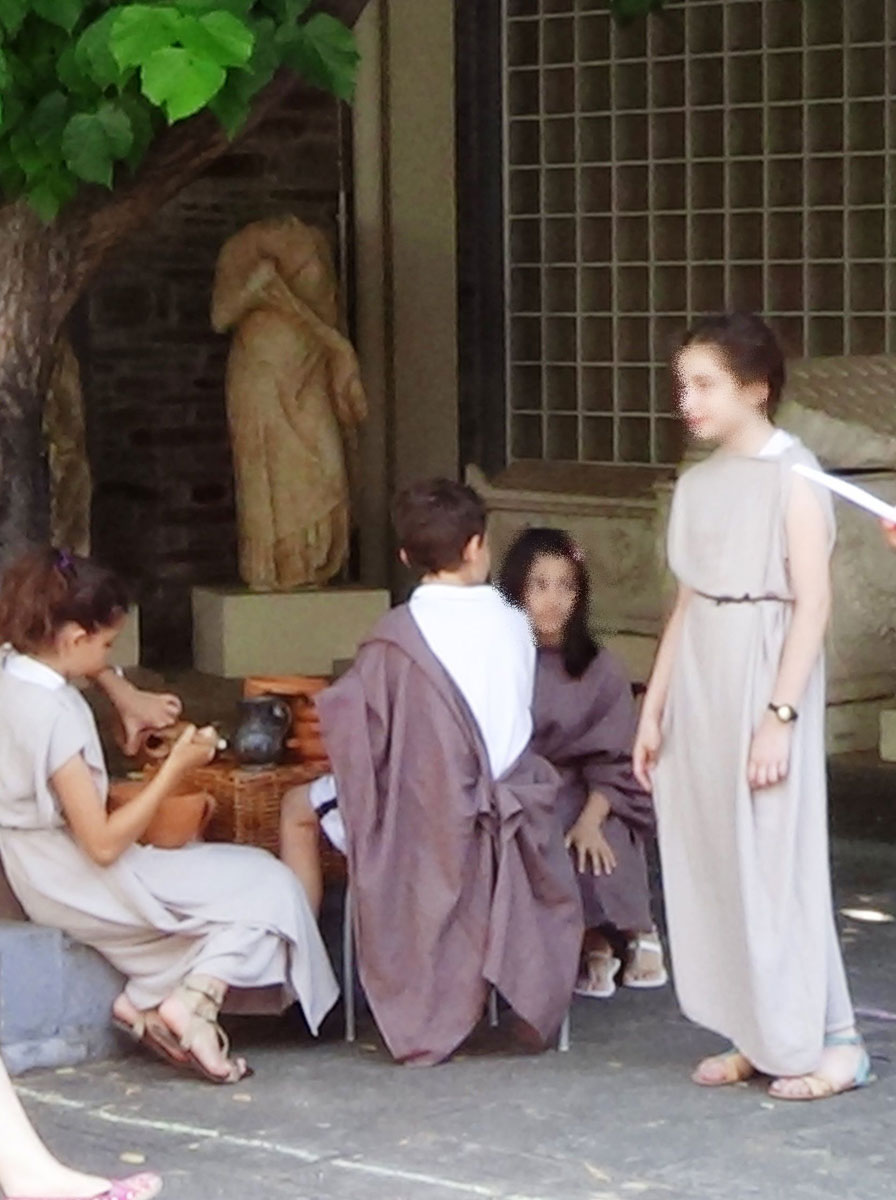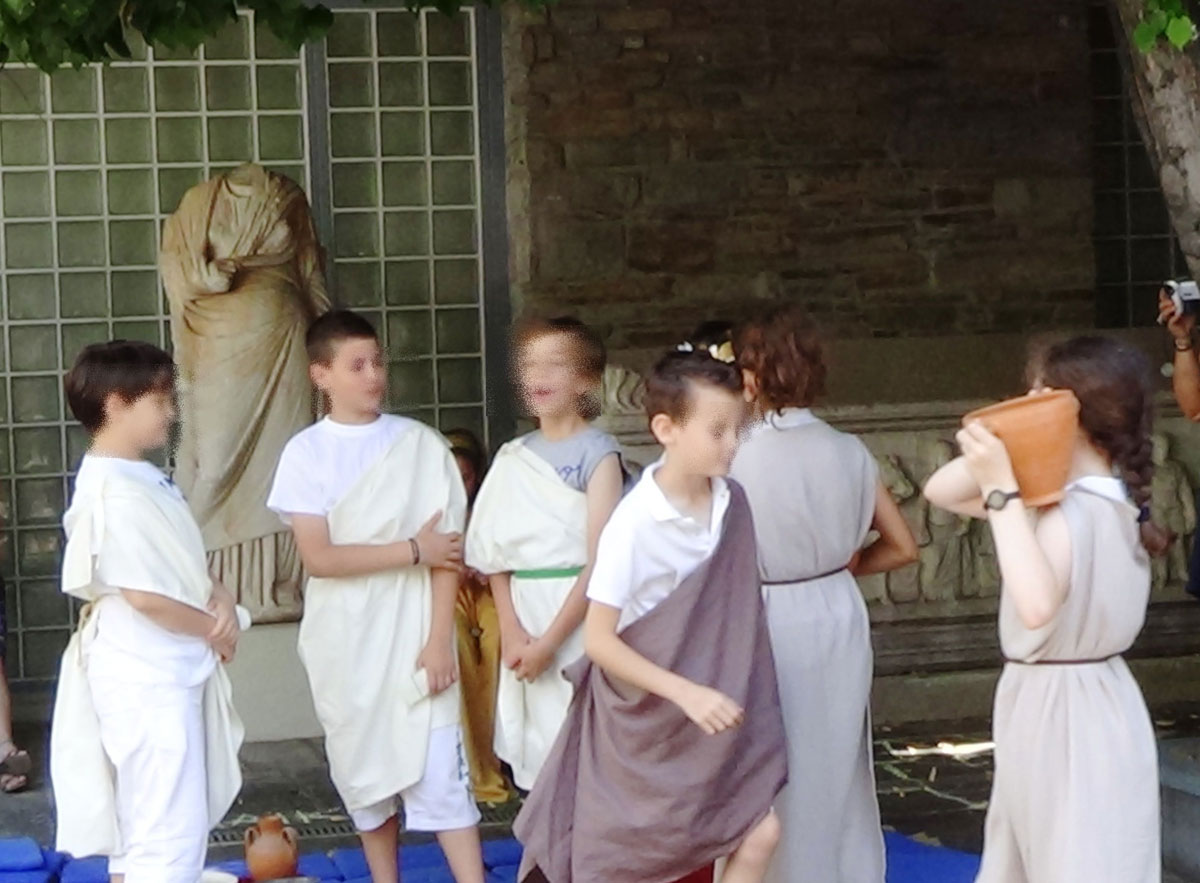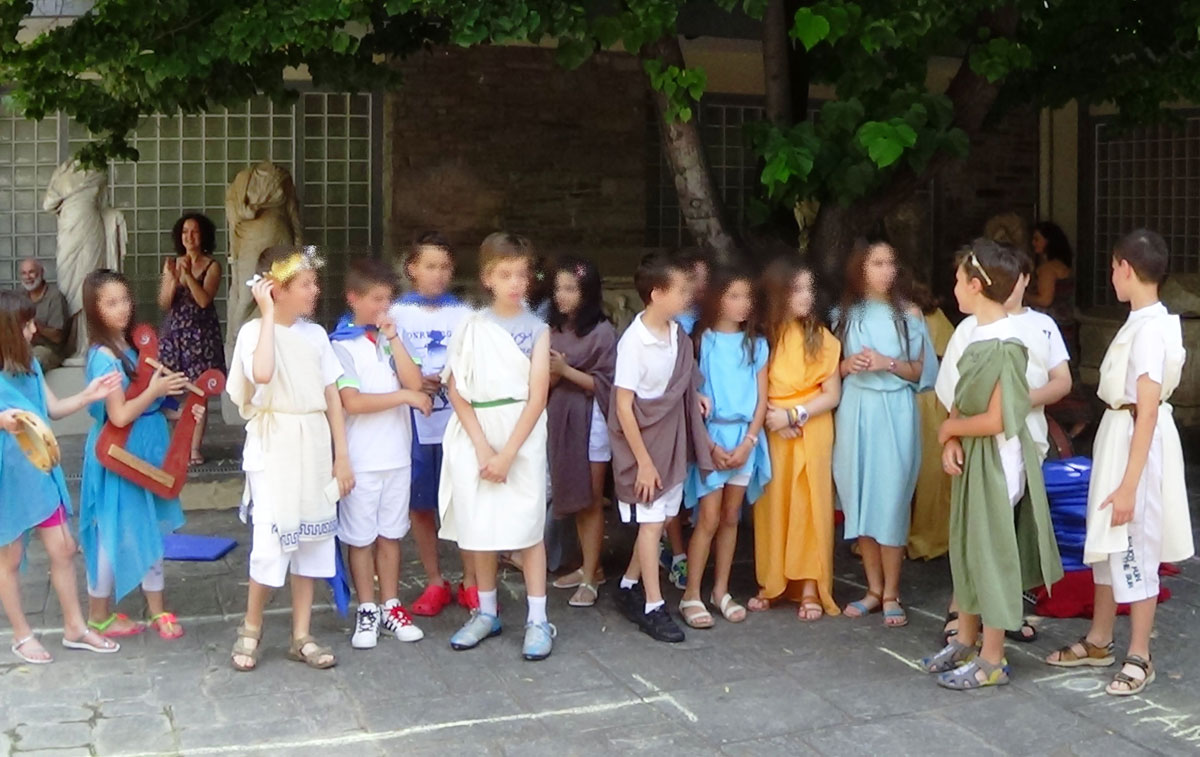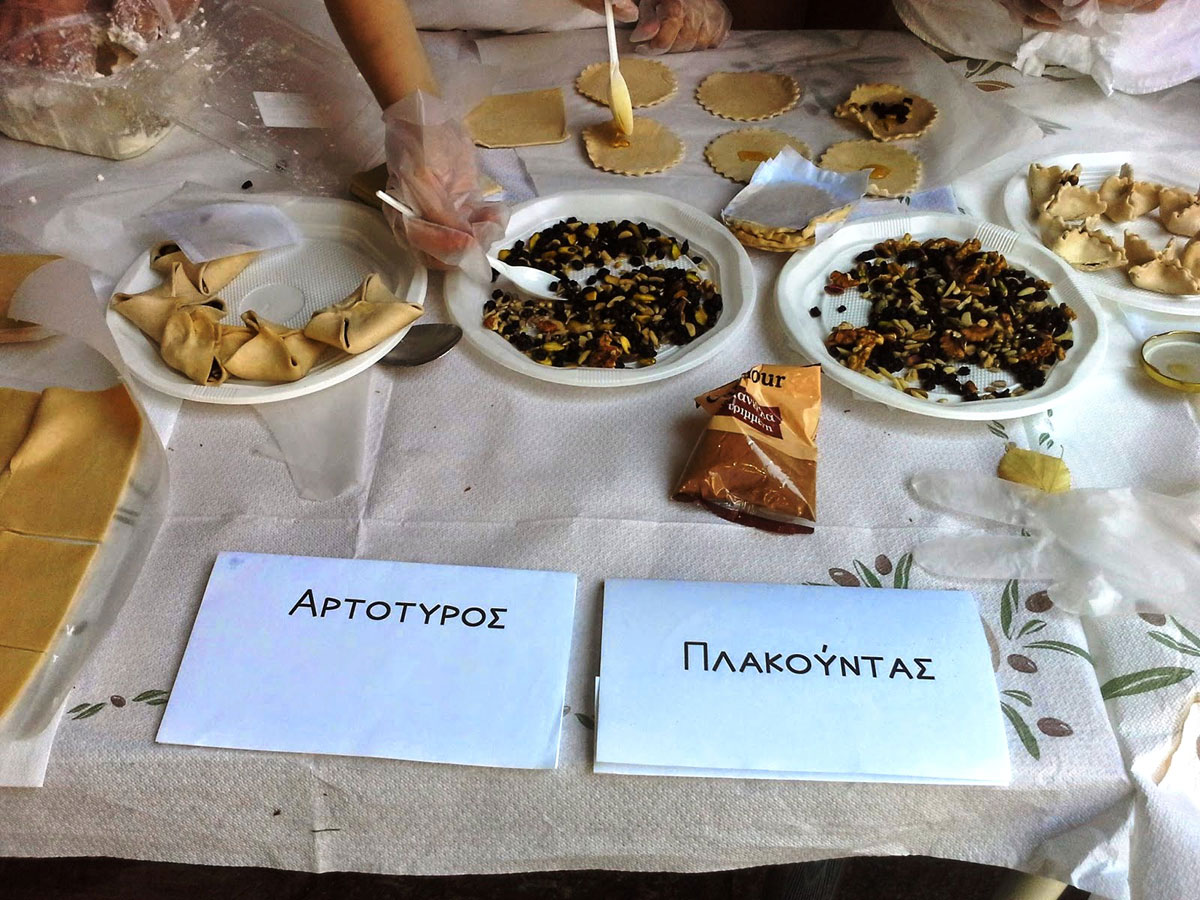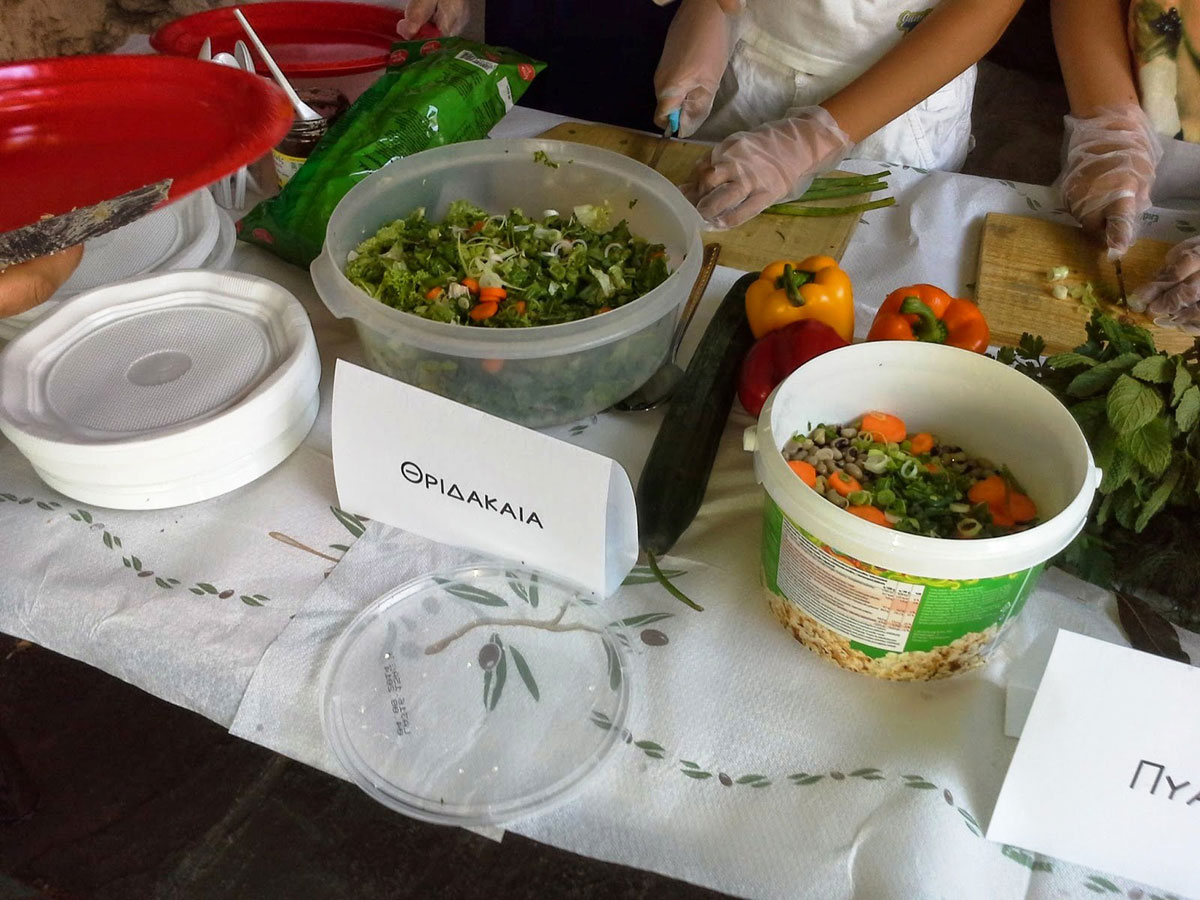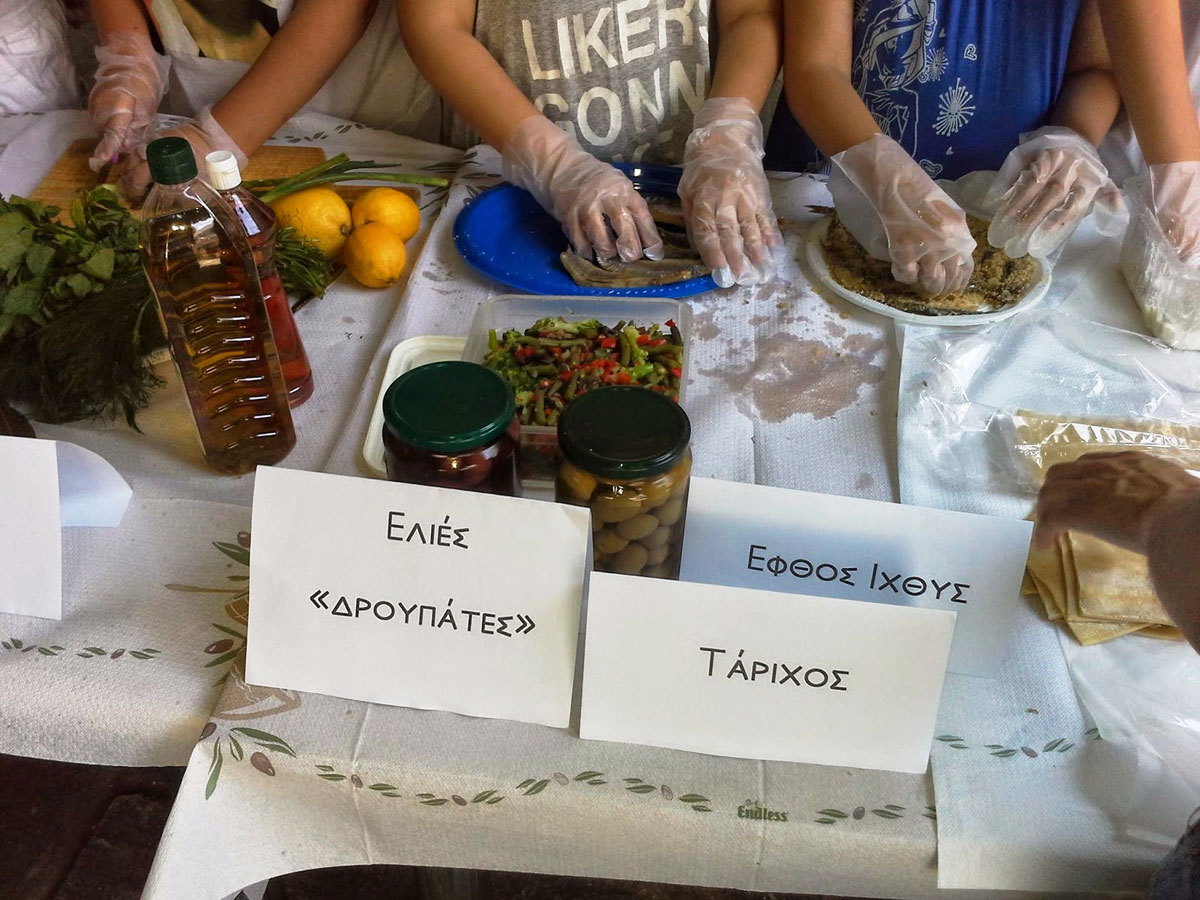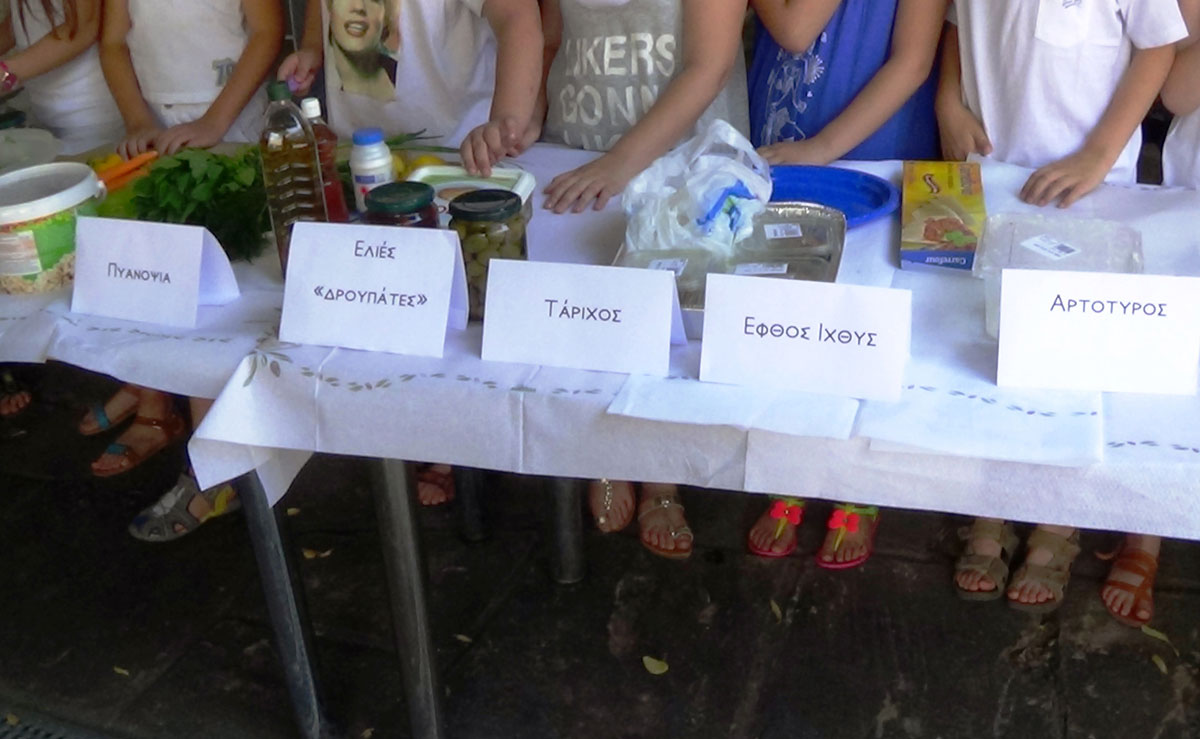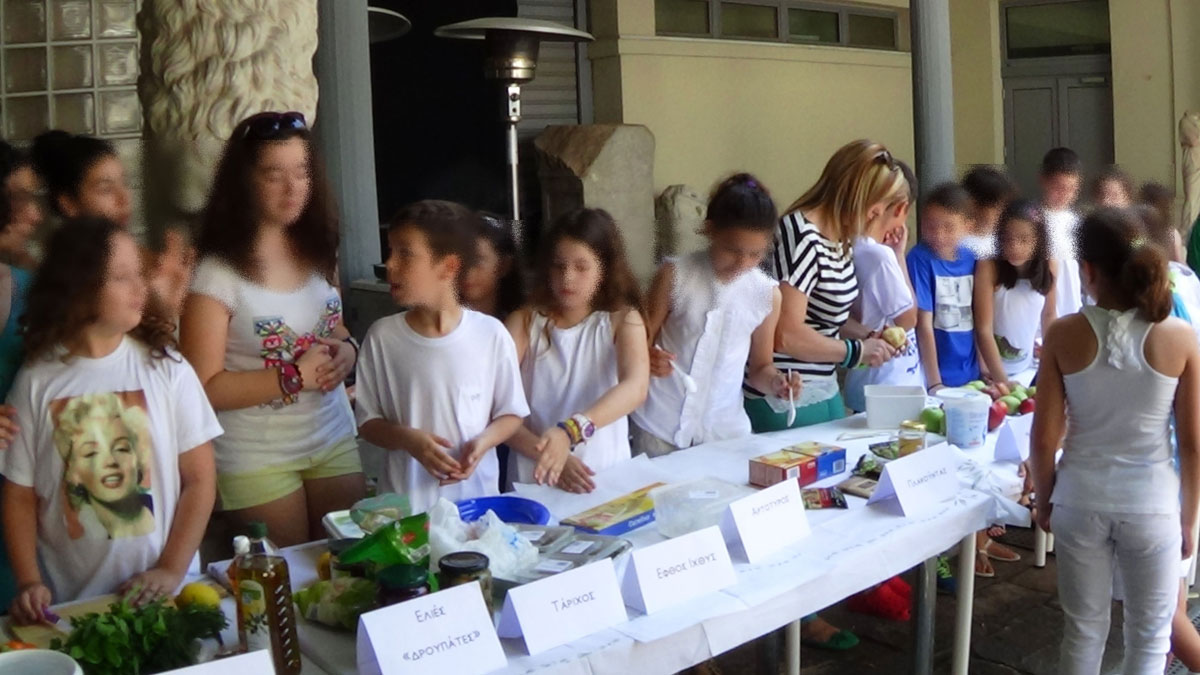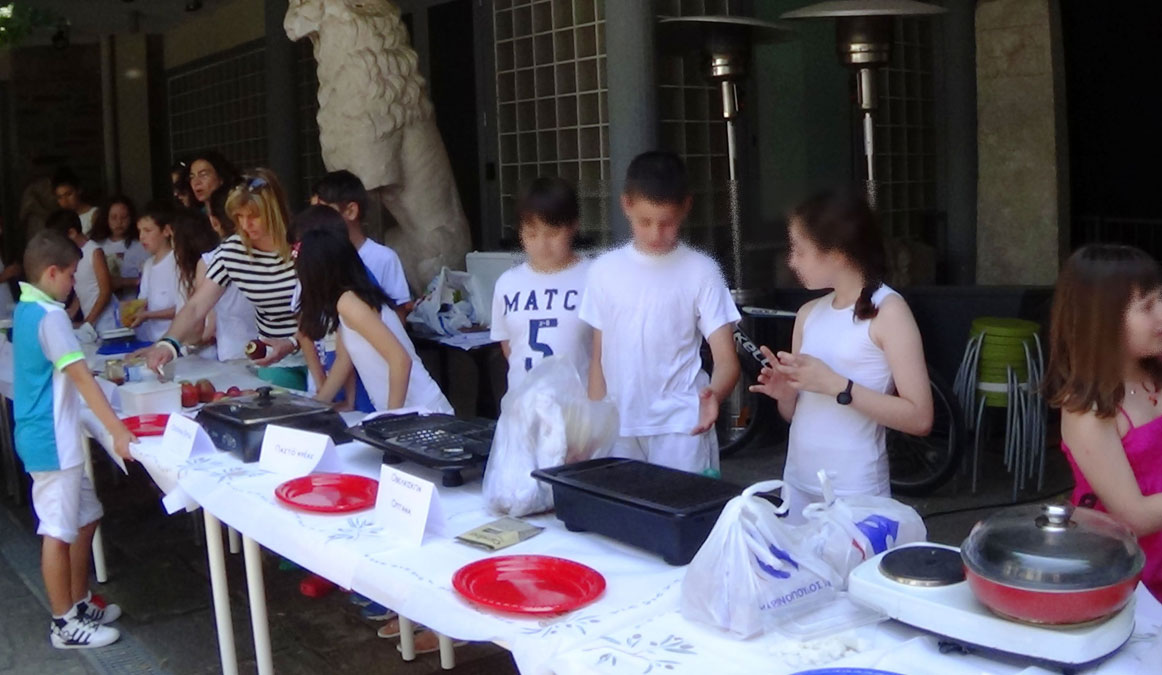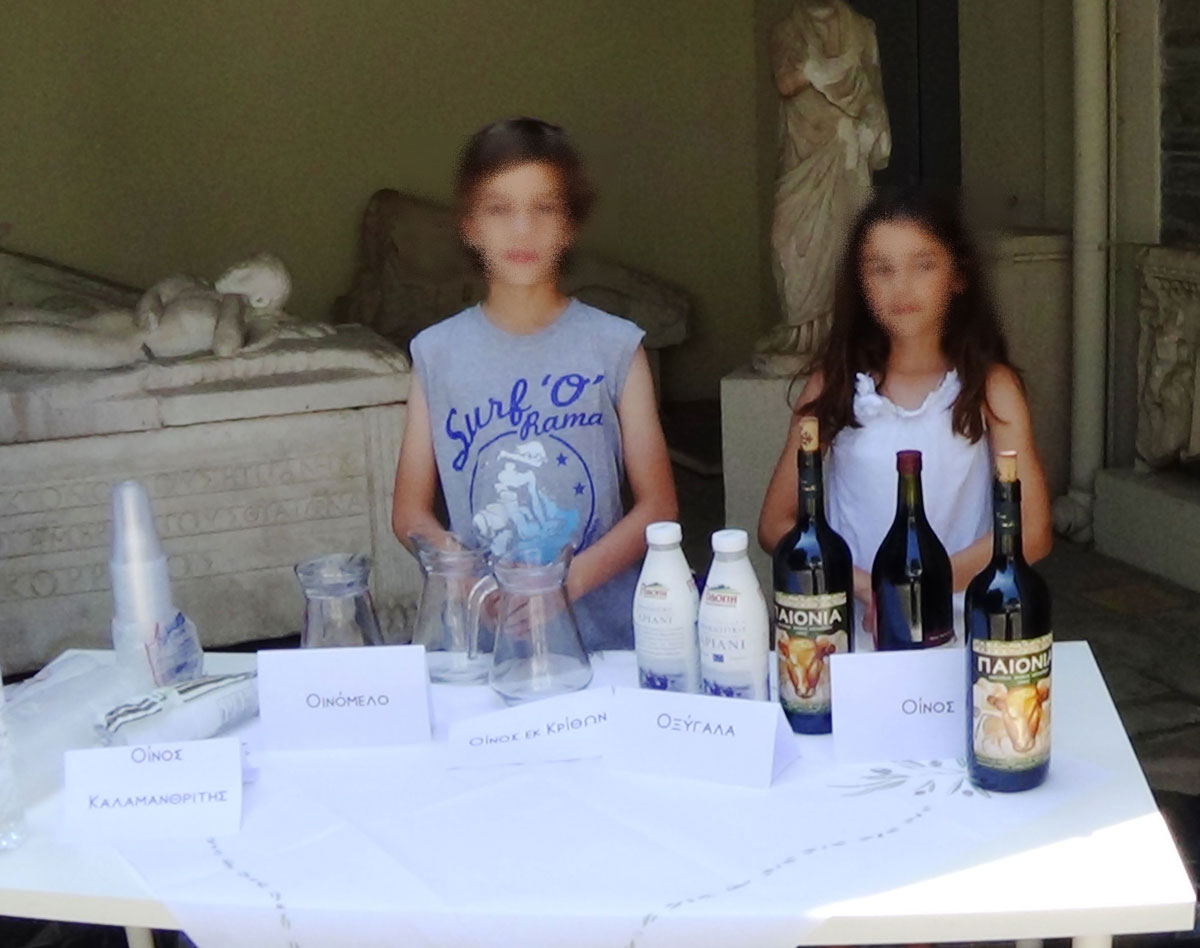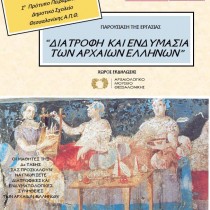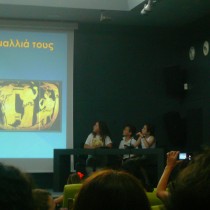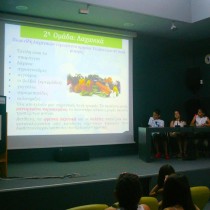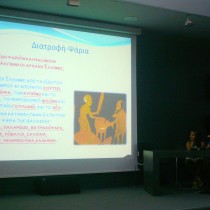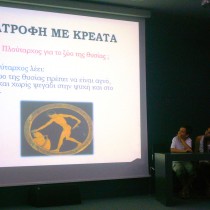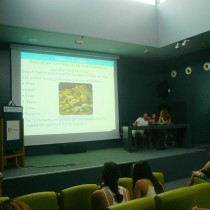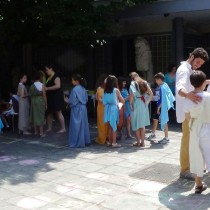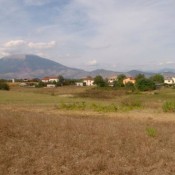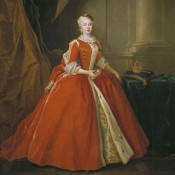The success of the “Byzantine table” project which we evaluated at the start of the following academic year of 2012-2013, proving that the students had attained most of the cognitive and educational goals triggered the planning, a year later in 2013-2014, of the next project for a new class, D2, of the 1st Experimental Primary School – School of Primary Education of the Aristotle University of Thessaloniki. Again it was related to nutrition but also combined with dress and was about antiquity which perfectly suited the subject matter being taught in 4th grade history. The cognitive educational objectives were the same as the previous project (“the Byzantine table”) and were recorded in the previous article. Learning by doing and Information and Communication Technology played the same leading role, as can be seen in the analytical description to follow.
Phases of the project “The Ancient Greek table” or “Nutrition and dress in ancient Greece”
At the beginning of January 2014, the teacher, P. Kourtis and the archaeologist and museum educator M. Girtzi had their first meeting to schedule the new project. For a start it was decided for the topic to be broader this time and in two parts, namely; Dress (what was worn, the types of fabric, the making of clothes) and Nutrition (what was eaten, how was it acquired, what were meals like, when were they eaten, what utensils were used) in Ancient Greece. It was considered by the project organizers that Ancient Greek dress and nutrition were firmly linked, making up a basic part of everyday life in Ancient Greece. As a topic therefore, it would be both generally interesting to research and able to raise the students’ interest, while also being available in printed or electronic sources some written especially for children. Having already the experience of the “Byzantine table” we considered that this project, initially called “Nutrition and Dress in Ancient Greece”, could very well end up being similarly organized as a “Ancient Greek table”. In the same meeting a broad range of material and sources of potential use were examined and finally the following sources were selected.
Sources on dress:
1. Blanck, H. (2004), Εισαγωγή στην ιδιωτική ζωή των αρχαίων Ελλήνων και Ρωμαίων, ΜΙΕΤ, Αthens.
2. Flaceliere, R. (1999), Ο δημόσιος και ιδιωτικός βίος των αρχαίων Ελλήνων, Παπαδήμα editions, Αthens.
3. Κόννολυ, Π. και Ντοτζ, Χ. (2001), Η αρχαία Πόλη, Πατάκη editions, Αthens.
4. Maffre, J.J. (1988), Η ζωή στην κλασική Ελλάδα, Δαίδαλος, Αthens.
5. Pekridou-Gorecki, A. (2008), Η μόδα στην αρχαία Ελλάδα, Παπαδήμα editions, Αthens.
6. Royer, S., Salles, C. και Trassard, F. (2005), Η ζωή στην Ελλάδα την εποχή του Περικλή, Πατάκης, Αthens.
7. Wilkinson, P. (2002), Η αρχαία Ελλάδα, Σαββάλα editions, Αthens.
8. «Μια μέρα στην Ακρόπολη» – pamphlet of an educational programme issued by the Ministry of Culture- 1st Ephorate of Prehistoric and Classical Antiquities.
Sourcesonnutrition:
1. Blanck, H. (2004), Εισαγωγή στην Ιδιωτική ζωή των Αρχαίων Ελλήνων και Ρωμαίων, ΜΙΕΤ, Αthens.
2. Δαφερέρα, Τ. (2004), Ελλήνων διατροφή – Μέτρον άριστον, Γραφίδα editions, Αthens.
3. Flaceliere, R. (1999), Ο δημόσιος και ιδιωτικός βίος των αρχαίων Ελλήνων, Παπαδήμα editions, Αthens.
4. Καραμήτρου-Μεντεσίδη, Γ. (2005), Αρχαία διατροφή: Ένα ταξίδι στην τέχνη της γαστρονομίας, edition of the Archaeological Museum of Aiane, Aiane.
5. Maffre, J.J. (1988), Η ζωή στην κλασική Ελλάδα, Δαίδαλος, Αthens.
6. Royer, S., Salles, C. και Trassard, F. (2005), Η ζωή στην Ελλάδα την εποχή του Περικλή, Πατάκης, Αthens.
7. Στεφανή, Ευ. και Σολομών, Ε. (2010), «Ο άνθρωπος είναι ό,τι τρώει… Προσεγγίσεις στην ιστορία της διατροφής», in Χ. Γκατζόλης (ed.), Ο πολιτισμός στο τραπέζι, ΑΜΘ, Thessaloniki, pp. 9-24.
8. Τσακπουνίδης, Ευ. (n.d.), Η διατροφή και η μαγειρική στην αρχαία Ελλάδα, Αthens.
9. Wilkinson, P. (2002), Η αρχαία Ελλάδα, Σαββάλα editions, Αthens.
Of course, the only pages selected from the above sources were those suited to the objectives initially stated. The obstacle of a multiple simultaneous reading and researching of the sources by the students was now easily tackled thanks to technology. Whatever sources existed in printed matter would be digitalized again so as to allow simultaneous access.
Again, the preferred method of work by the students’ was the one of team collaboration. The students were divided into seven groups (6 of 3 persons and 1 of 2). Each group would have one different topic for research on Dress and one on Nutrition so as to write down on a work sheet basic information on both. The resulting topics are referred to below.
Topics on Dress:
-Head coverings
-The Chiton and the peplos
-The himation/exomis/chlamys
-Foot ware
-Fabrics and methods of dress making
-Dress in Sparta
-Dress and society
Topics on nutrition:
-Cereal
-Fruit/ vegetables
-Fishing/fish/seafood
-Meat/milk/cheese
-Wine
-Cooking utensils
-Meals/the symposium
The sources were digitalized as pdf files and were uploaded on the weblog http://greece450bc.wordpress.com/. Work sheets were also designed to guide the research. These contained 4 types of questions: a) 3-5 simple questions referring to aspects of each topic, b) interpretation of 3 “terms” given in their original form, c) a “clever question” demanding the student’s attention and referring either to some god or hero of mythology or to the words of some famous person from antiquity, d) description of pictures. To answer these questions, research had to be done from various sources selected for the children who were only nine years old. There were some identical questions in more than one work sheet, either because they were thought of as very important or because we wanted to observe each group’s different approach on the same topic.
It was decided that the project should start with Dress and so began the first phase of its implementation. An introductory lesson was given in mid January about Everyday Life in Ancient Greece and this served as a starting point. Over the next few days during the Computer and History classes, knowledge was acquired by visiting relevant sites and carrying out activities. To be specific, first the students visited the site of the Acropolis Museum where, during the first hour of class, they drew / dressed statues and printed out their drawings. The second time, during two hours in class, they were asked to visit the site: http://www.parthenonfrieze.gr/#/home, observed the ancient Greeks’ way of dressing and played games related to the Frieze. The third time, during two hours in class, educational material was analytically presented from the site: http://repository.acropoliseducation.gr/acr_edu/bitstream/11174/23/1/28H_EKATOMBAIWNOS_GR.pdf and the topic of clothing was discussed. The fourth time a virtual tour of the Acropolis Museum was made with the Google Art Project (http://www.google.com/culturalinstitute/collection/acropolis-museum?projectId=art-project) and a special discussion on the clothing and hairstyles of the Karyatids and the ‘’Peplophoros’’. At the end of January that students participated in an event depicting the Panathenaia procession. Emphasis was put on clothes and the dress of gods and mortals was discussed and compared.
The children’s curiosity and interest having been stimulated by all the above preparation, the announcement of the possible realization of a dress related project was greeted with great pleasure. Next came the division into groups and the distribution of the work sheets on Dress. The method of work was explained to the students: research would be done on computers in the school’s computer workshop. All information would be in the blog already on line. The questions had to be answered and written down in a note book, then converted to digital material (Word) and last a power point or movie maker for presentation had to be set up.
Some indicative questions from the work sheets were:
A) General questions
-What type of hats were worn by the ancient Greeks? (names and brief description)
-How did women wear their hair, how did they put it up, how did they adorn it?
-The chiton: what fabric was it made of and how was it worn?
-The himation: how was it secured?
-What type of shoes were worn by the ancient Greeks?
-Who did the weaving and who the spinning?
-What did Spartan men wear?
B) Interpretation of “terms” (Explain the words…)
-“podiris”,“cheiridotos”,“apoptygma”,“krypis”,“gnafevs”, “phainomerides”
C) Clever Question
-What hats were worn by Hephaestos and Hermes respectively?
-What was the typical dress of Hermes?
-What shoes are worn by the horsemen on the Panathenaia frieze?
-In which region was money earned by making clothes?
-Who were forbidden to wear shoes in Sparta?
D) Description of a picture
-Describe the hairstyle of the man in the picture, what are the two women wearing?
-Identify the footwear
-What shell is depicted ?(murex shellfish producing red dye/porphyra)
The phase of finding, analyzing, comparing and recording lasted 4 two hour sessions, while the designing of the presentation lasted 2. Although, unlike the previous project, no problems occurred during the groups’ collaboration, nevertheless it was noticed, this time as well, that some groups did not bother to seek information from a second or third source considering it to be useless. The groups made their presentations for a total of 3 two hour sessions in front of the entire class and received criticism in public. This related more to technical issues such as the manner of presentation, clarity, understanding, the completeness of the slides as well as how this was achieved by the students. Next a discussion was held on the content presented, starting with the interpretation of words and terms and a commentary on the way of life of the people of that period. This was followed by the necessary comparison with our times regarding the type of dress, the means of making clothes, as well as general habits concerning dress. In this phase, the students were given the opportunity to “experience” the ancient Greek dress they were studying, since we borrowed from the Museum of Cycladic Art the Museum suitcase containing “ Ancient Greek dress” and dressed all the students in recreated ancient clothes. After a few changes, the children’s projects were ready to be uploaded on the blogs, so as to become accessible to everyone.
Having now reached the end of March, we decided that we should start directly on the second part of the project related to ancient Greek nutrition so as to complete the work as a whole by the end of the year. The starting point was a playful presentation about ancient Greek nutrition. Having worked with particular pleasure on the first part of the project about dress, the students enthusiastically accepted the proposal to work on the second part dealing with Nutrition. The groups were already divided and by now had the experience of how to work. The material was already online, so the work sheets were distributed and the objective was, as before, for the questions to be answered initially in writing, then to be made digital in Word form so as to finally create either a power point or movie maker presentation. Some indicative questions from the work sheets were:
A) General questions
-In which regions were cereals cultivated in the Classical era?
-Which herbs were used by the ancient Greeks?
-How was fishing done in ancient Greece?
-What animal products were more accessible to most people?
-How did the ancient Greeks and “barbarians” respectively drink their wine?
-What was the name of the first cookery book and what were the five golden rules?
-What was eaten by the ancient Greeks who followed a healthy balanced diet?
B) The interpretation of “terms” (Explain the words…)
-“frygetro”, “etnos”, “mittiton”, “oinochoe”, “eschara”, “akratisma”
C) A clever question
-What does Hippokrates recommend for rejuvenation?
-What does Plato say about fishing?
-What does Plutarch say about sacrificial animals?
-What does Plato say about wine?
-What does Aristotle believe about the Kitchen?
-What is “Plato’s Symposium”?
D) The description of a picture
This time, all procedures, now being familiar to the students, lasted far less. The research phase, namely finding, analyzing, comparing and recording, was realized in 3 two hour sessions while making the presentation took one. The students’ collaboration was first class and they showed considerable progress as researchers attempting to cross check information from as many of the sources provided. The groups’ presentations to the whole of their class took place in 2 two hour long sessions and the criticism regarding both content and technical matters, was minimal. The discussion to follow was particularly constructive and was on similar lines as the previous one. Having interpreted terms and explained any questions, since the children had already been initiated to the daily life of the ancient Greeks, we moved on to comparing that (life) with life of today regarding nutrition, the means used but also general nutrition related habits. The presentations were uploaded on the blog in order to be accessible to everyone.
Now that the students had acquired a theoretical background, “learning by doing activities” were again organized to then be implemented in collaboration with the departments of educational programmes of two museums, the Archaeological Museum of Thessaloniki (AMT) and the Archaeological Museum of Aiani in Kozani. Specifically, at the beginning of June, the children went on two visits and took part in educational programmes directly related to the project as a whole i.e. “ Nutrition and Dress in ancient Greece”. In the AMT they participated in the theatrical event “Nutrition and Dress in Ancient Times” as well as two programmes in Aiani; “Ancient Nutrition” and “Dress from Antiquity to Byzantium, Accessories and Jewellery”.
Given the great success of the closing event of “The Byzantine table”, the previous project, in the Museum of Byzantine Culture, it was thought obvious from the start that something similar had to be designed; the presentation of students’ group projects in front of a wider audience and the implementing of activities of an experiential nature, as a conclusion to this project. Therefore, during the initial planning, the possibility was examined of carrying out this project’s final phase in its “natural environment” i.e. the Archaeological Museum of Thessaloniki. We were directly given both permission to use the amphitheatre and the museum atrium for the final event as well as being given the undivided support and collaboration of the faculty of the department of Educational Programmes (O.Sakali, Ev. Tsiamanga, S. Mandikou).
“The ancient Greek Table” event took place on Saturday, June 14th 2014, in the Archaeological Museum of Thessaloniki. It was divided into 3 parts; the presentation of the projects, a theatrical event and the preparation and cooking of ancient Greek cuisine. To begin with, the students of class D2 announced the results of their projects on “Nutrition and Dress in ancient Greece” in the amphitheatre of the AMT, in front of an audience that included their parents. Next, they dressed in ancient Greek clothes for the theatrical event designed by the museum educators of the AMT, took on specific roles and recreated the “Ancient Greek Symposium” in the museum atrium. The event was completed by the “learning by doing” phase par excellence, during which the children cooked dishes eaten by the ancient Greeks for the parents and the museum visitors. Specifically, the students carried out recipes we had chosen from the sources they had studied and prepared the following dishes: “thridakaia”(a salad made of lettuce, bulgur, onion, dill and peppers),“pyanopsia” (bean salad with vegetables), olives both “droumbates” (savory) and “thlastes” (crushed), “taricho” (salted fish), “efthous ichthyes” (fish and vegetables), “oothrion”(omelette), “oveliskous optana” (souvlakia), “kreokakavo”(kavourmas), “artotyro” (dough with cheese), “plakounda”(dough with honey and nuts), “oporai optai meta melitos”(baked fruit with honey), “meloroia”(apple and pomegranate with yoghurt and honey), “kekrameno oino”( wine diluted in water), “oinomelo”(wine and honey), “oinokalamanthiti”(wine with mint), “oino ek krithon” (beer), “oxygala”(sour milk). In this way, the children really “experienced a day in ancient Greece”, they savoured “ancient Greek cuisine” and initiated their parents and visitors to it.
Epilogue
When evaluating both “the Byzantine table” and “the Ancient Greek table”, it was found that, for the most part, the cognitive and educational aims were achieved. By engaging in a pleasant activity and making the most of the “learning by doing” method, the students learned the following skills: to do research and reach conclusions, to familiarize themselves with the PC as a means of research and expression, to digest taught modules and become more knowledgeable on Byzantium and ancient Greece respectively, to acquire critical thought, to learn both to work autonomously but also to collaborate with their peers. An additional benefit of paramount importance was that by collaborating with the two museums, the AMT and the MBCT, and holding the events there, the children familiarized themselves with the Museum both as a place and an institution. The latter according to the official definition of the ICOM now constitutes “a permanent, non profit making institution, at the service of society and its development, open to the public, and whose work it is to collect, study, preserve, make known and exhibit evidence of human civilization, its aim being to educate, entertain and be a place of study”. In this manner, the children acquired a solid foundation on which to build up a cultural conscience that will allow them to find analogies between the past and the present, to acquire a feel for their historical origins, to appreciate the role played by the past, to become aware and protect the bearers, par excellence, of our cultural heritage; the monuments and museums!
Maria Girtzi, Archaeologist
Paraskevas Kourtis, Teacher
